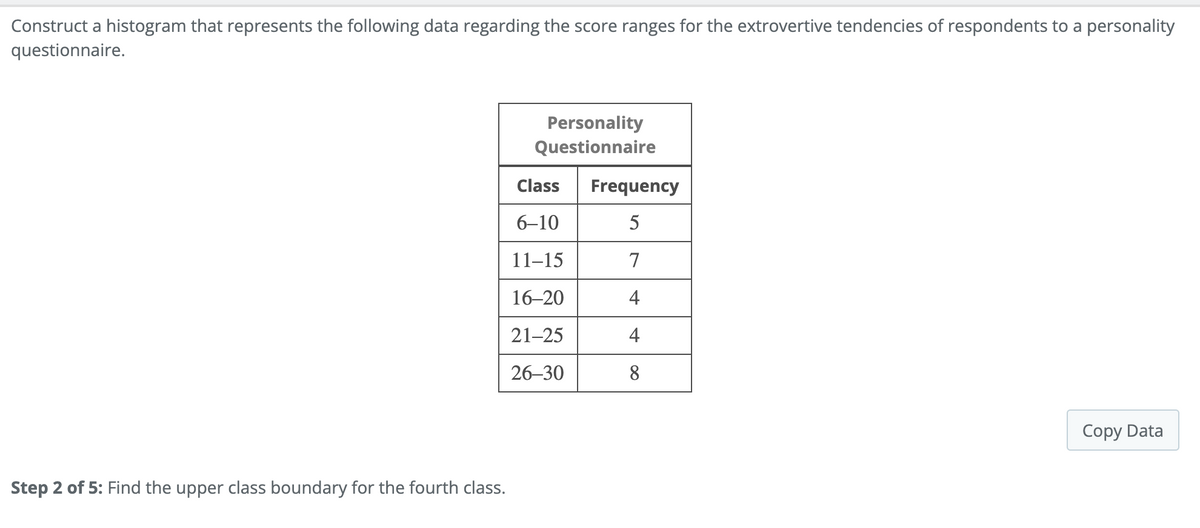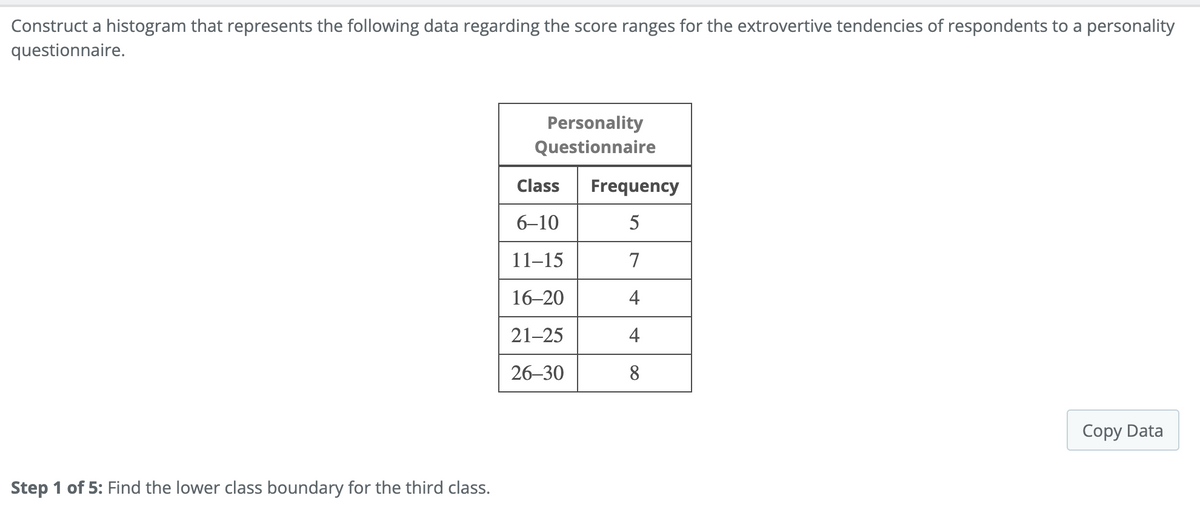Construct a histogram that represents the following data regarding the score ranges for the extrovertive tendencies of respondents to a personality questionnaire. Personality Questionnaire Class Frequency 6–10 11-15 7 16–20 4 21–25 4 26–30 8. Copy Data Step 2 of 5: Find the upper class boundary for the fourth class.
Construct a histogram that represents the following data regarding the score ranges for the extrovertive tendencies of respondents to a personality questionnaire. Personality Questionnaire Class Frequency 6–10 11-15 7 16–20 4 21–25 4 26–30 8. Copy Data Step 2 of 5: Find the upper class boundary for the fourth class.
Glencoe Algebra 1, Student Edition, 9780079039897, 0079039898, 2018
18th Edition
ISBN:9780079039897
Author:Carter
Publisher:Carter
Chapter10: Statistics
Section10.5: Comparing Sets Of Data
Problem 14PPS
Related questions
Question
Question 13
Step 1 and Step 2

Transcribed Image Text:Construct a histogram that represents the following data regarding the score ranges for the extrovertive tendencies of respondents to a personality
questionnaire.
Personality
Questionnaire
Class
Frequency
6–10
5
11–15
7
16–20
4
21-25
4
26–30
8
Copy Data
Step 2 of 5: Find the upper class boundary for the fourth class.

Transcribed Image Text:Construct a histogram that represents the following data regarding the score ranges for the extrovertive tendencies of respondents to a personality
questionnaire.
Personality
Questionnaire
Class
Frequency
6–10
5
11–15
7
16–20
4
21-25
4
26–30
8
Copy Data
Step 1 of 5: Find the lower class boundary for the third class.
Expert Solution
This question has been solved!
Explore an expertly crafted, step-by-step solution for a thorough understanding of key concepts.
This is a popular solution!
Trending now
This is a popular solution!
Step by step
Solved in 2 steps with 2 images

Recommended textbooks for you

Glencoe Algebra 1, Student Edition, 9780079039897…
Algebra
ISBN:
9780079039897
Author:
Carter
Publisher:
McGraw Hill

Glencoe Algebra 1, Student Edition, 9780079039897…
Algebra
ISBN:
9780079039897
Author:
Carter
Publisher:
McGraw Hill